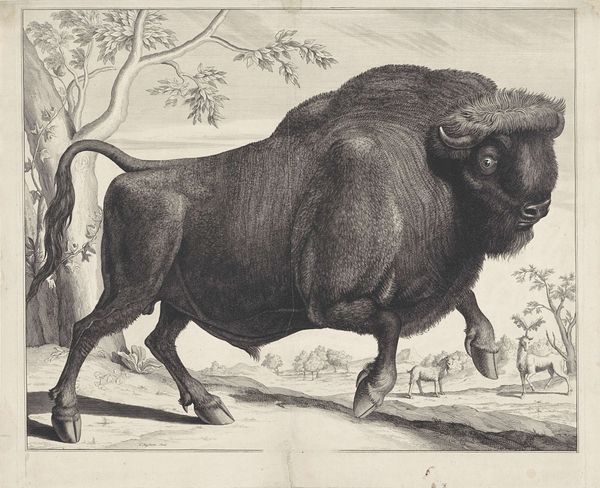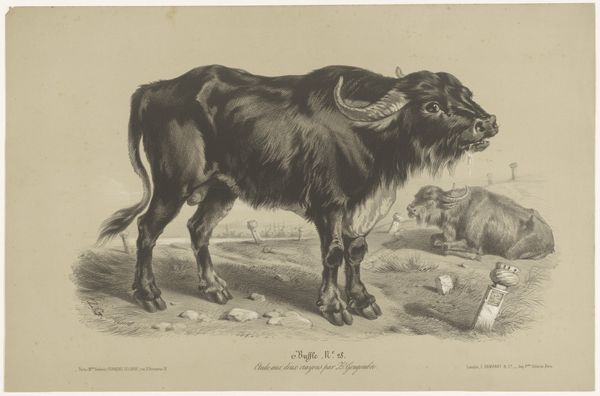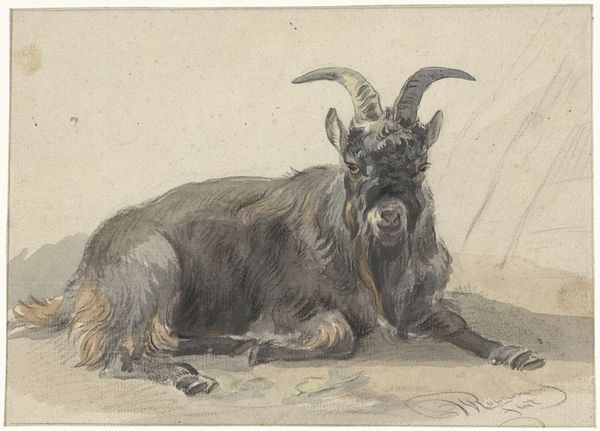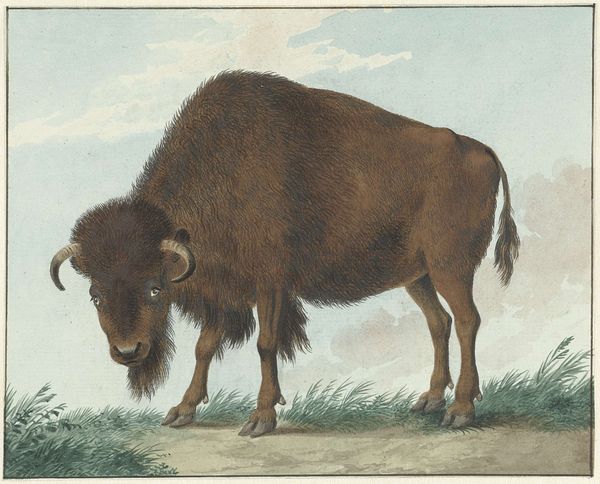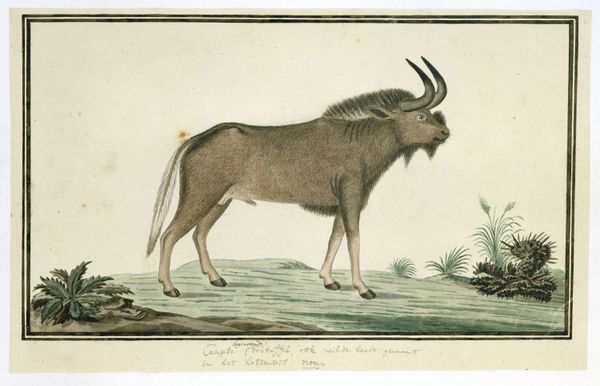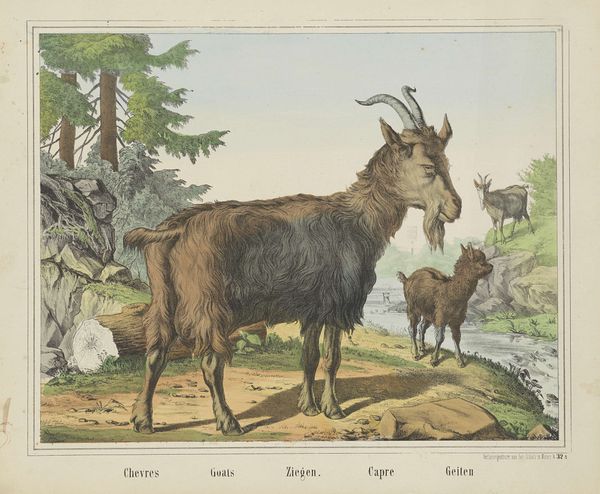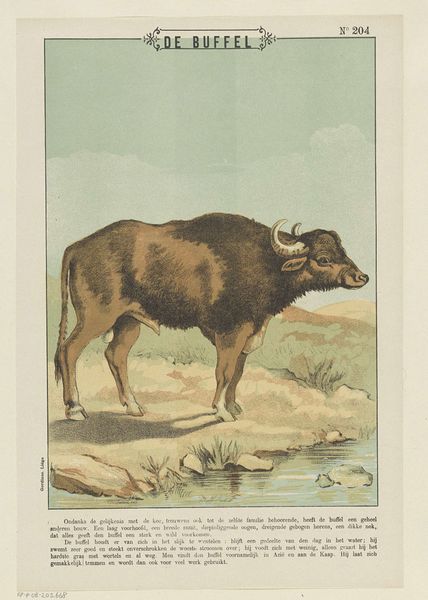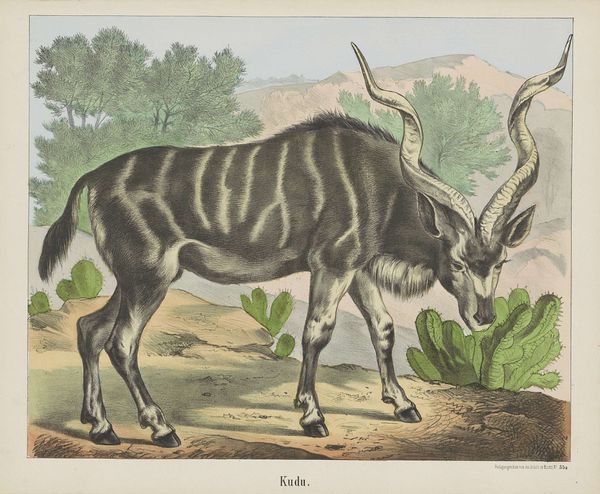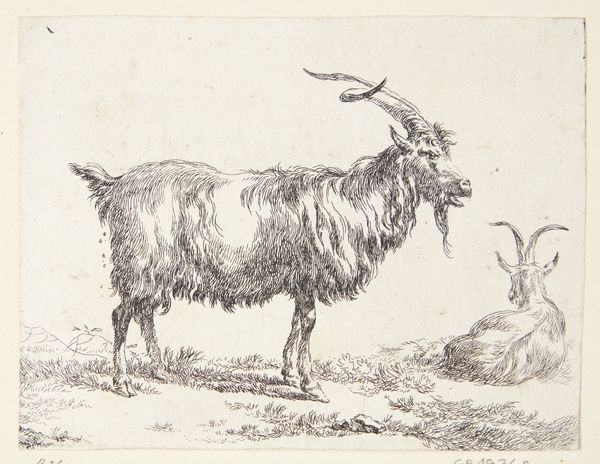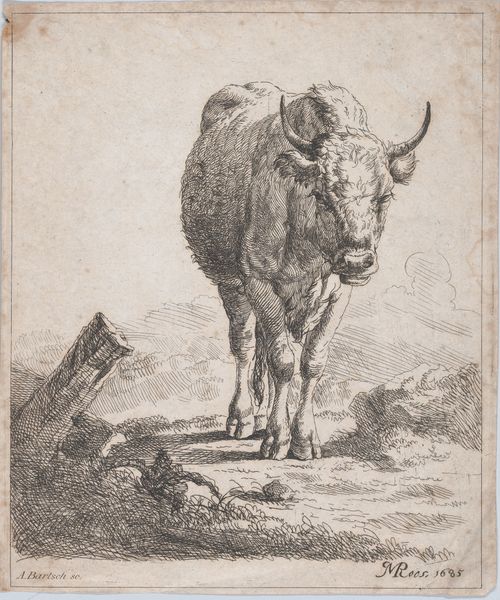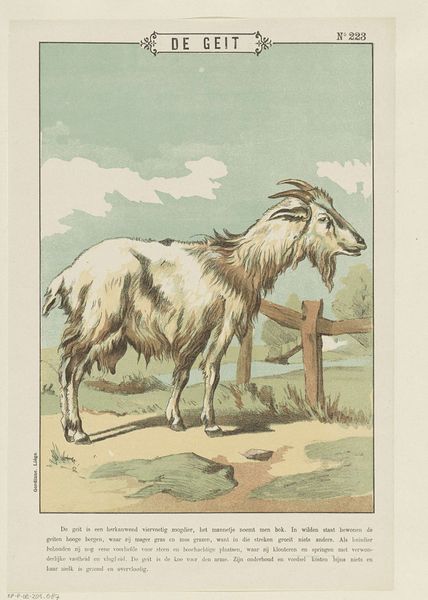
lithograph, print
#
lithograph
# print
#
landscape
#
caricature
#
coloured pencil
#
watercolour illustration
#
watercolor
#
realism
Dimensions: height 350 mm, width 430 mm
Copyright: Rijks Museum: Open Domain
Curator: This lithograph is titled "Yack," produced sometime between 1829 and 1880 by firma Joseph Scholz. It is now housed in the Rijksmuseum. Editor: My immediate response is one of slight amusement. The yak seems both regal and rather comical, perched somewhat awkwardly on what I presume is a mountainous crag. Curator: The image certainly taps into something archetypal. For centuries, the yak has been associated with strength, endurance, and the ruggedness of high-altitude life. Think of its cultural significance in Tibetan Buddhism and Himalayan folklore. Editor: Yes, I see that, but it is how Scholz has treated its form. The contrast between the dark, dense upper body and the almost dainty white fringe is quite striking, creating a visual tension. I'm intrigued by the graphic qualities of the print – the stark lines and limited color palette – how does it influence our perception? Curator: Those lines speak to a tradition of scientific illustration, yet the animal possesses a somewhat endearing quality. Consider the history of human interaction with the yak; they provide wool, transport, and sustenance, thus playing an essential role in sustaining livelihoods, further symbolizing resilience and survival in extreme environments. Editor: Interesting point about "scientific" documentation. Still, its pose—this rather self-conscious display, one might say—makes me wonder about Scholz's intention. It almost verges on caricature, exaggerating the animal's bulk and giving it an almost cartoonish gravity. Perhaps commenting on human perceptions rather than pure anatomy? Curator: Indeed! The choice of the lithographic medium itself contributes; known for its capacity to render fine details and subtle textures, it elevates the yak beyond a mere study and into a work imbued with narrative potential. Editor: I now notice, though, the curious handling of light and shadow. The subtle modelling gives the yak volume, yet it almost flattens the background elements – blurring depth. This pulls focus back on the animal itself. Curator: So we find ourselves looking at a cultural icon, a beast of burden, through the lens of artistic representation and interpretation, a reminder that our perceptions are forever colored by history. Editor: In the end, it is more than just an image of an animal—a skillful negotiation between form, context and cultural symbol. A deceptively complex work on several layers.
Comments
No comments
Be the first to comment and join the conversation on the ultimate creative platform.

